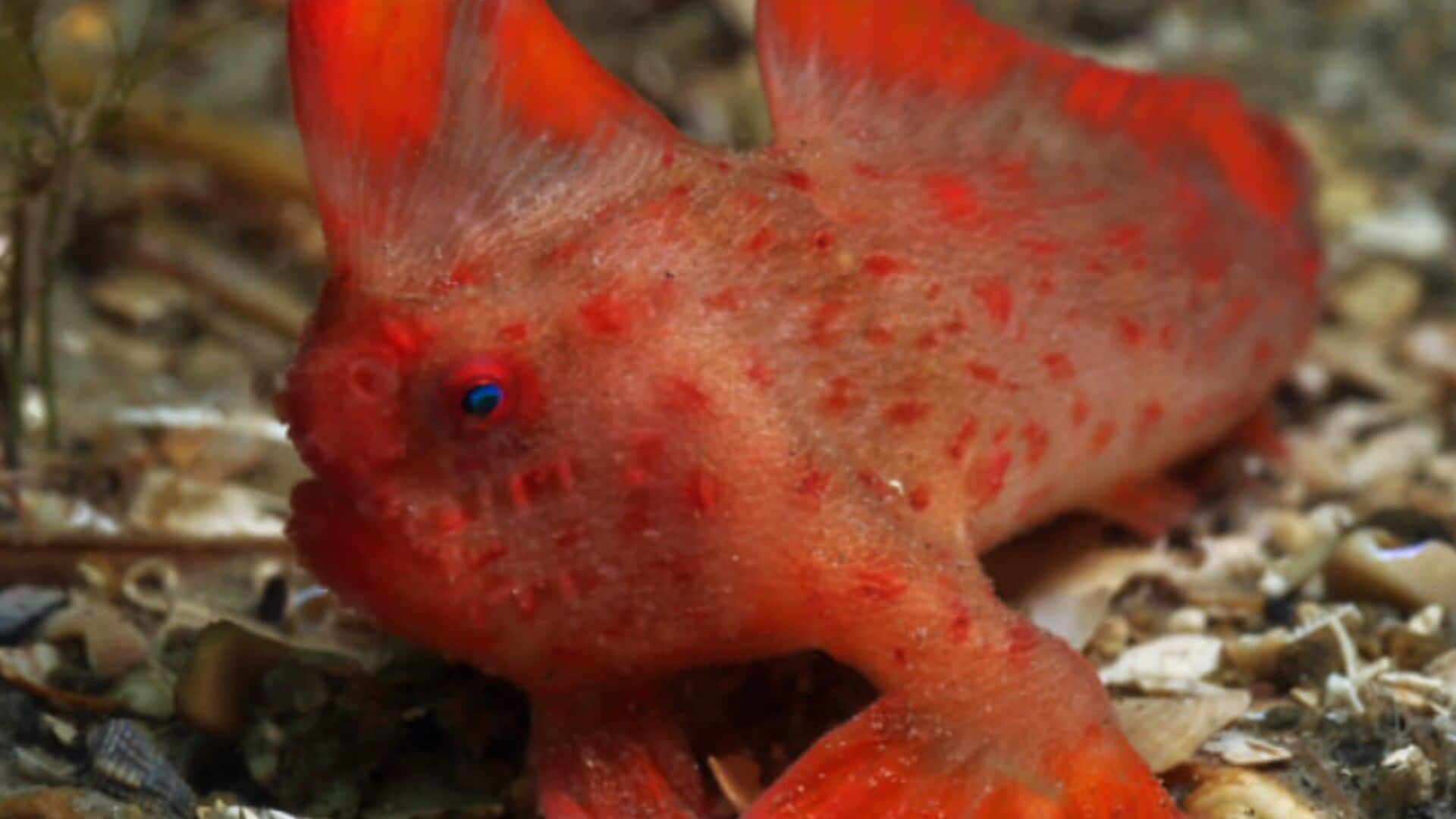
This strange-looking sea creature with human-like hands is going extinct
What's the story
The Red handfish, a peculiar angler fish with human-like hands, is one of the world's most endangered species. Found exclusively in two small reef patches off Tasmania's coast, Australia, this vibrant creature measures no more than 4 inches long. Andrew Trotter, head of the Red handfish conservation breeding project, at the University of Tasmania's Institute for Marine and Antarctic Studies (IMAS), describes it as "an amazing curiosity of evolution."
Lifestyle
Everything we know about the creature
The Red handfish leads a unique life, residing on the seabed and using its pectoral fins to walk across the seafloor. Trotter explains that "while walking with fins is rare, some fish can even do this on land." However, its limited mobility confines it to small reef patches off Tasmania, making it vulnerable to pollution, habitat loss, and urban development. Trotter states that "the red handfish is probably in the rarest 'handful' of fish in the world."
Steps
Conservation efforts for the Red handfish
Due to their rarity and vulnerability, Australian researchers have taken approximately 25 of the known 100 wild Red handfish into captivity. Three died in captivity, but 18 were brought back to their habitat once marine heatwaves subsided. Efforts are ongoing to protect these unique creatures and their habitats from degradation due to coastal development, pollution, and destructive fishing practices. Researchers are also exploring captive breeding programs as part of these conservation efforts.
Efforts
Protecting Tasmania's marine biodiversity
The conservation of the Red Handfish is part of a larger effort to protect Tasmania's rich marine biodiversity. The waters of Tasmania are home to a variety of marine life, including seahorses, different handfishes, and other organisms. These diverse ecosystems are supported by the region's kelp forests and rocky reefs. To ensure the success of these efforts, proper research, monitoring, community engagement, and education about marine conservation are crucial.